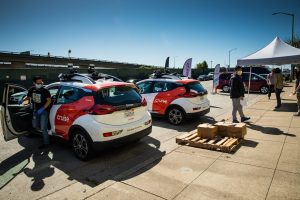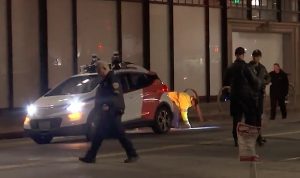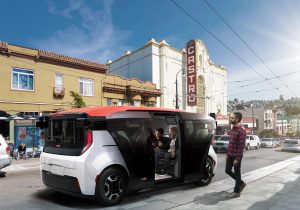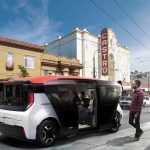The National Highway Traffic Safety Administration agreed to end its probe of General Motors’ Cruise subsidiary’s robotaxis after it agreed to recall 1,200 of the vehicles.
NHTSA opened an investigation into the self-driving vehicle fleet’s technology in December 2022 after repeated complaints about random hard braking incidents, including two injuries in three rear-end collisions.
The recall is the latest move by Cruise to get its vehicles back on the road and resume regular operations ferrying paying customers from place to place. However, federal, state and local government officials have all expressed doubt, or at least concern, about the technology following several incidents.
The most prominent of those involving a Cruise vehicle hitting and dragging a pedestrian in San Francisco last October. The GM unit’s been spending time and resources to improve the self-driving technology since then as part of its effort to regain the trust of the governmental naysayers and others.
Disagreement to move forward
Cruise officials disagreed with NHTSA’s push for a recall, but went forward with it anyway so it could get the investigation closed and move forward.
“We are committed to building trust and increasing transparency with respect to autonomous vehicle technology,” a Cruise spokesperson said Thursday.
Previous software updates designed to reduce the number of sudden braking events helped broker a deal with the federal safety agency. Cruise showed regulators data that the vehicles engage in “unexpected braking events” less than human drivers.
More questions

Cruise founder Kyle Vogt resigned shortly after a Cruise robocab started up and dragged a pedestrain pinned underneath.
This is one of two probes by NHTSA. The second, which began last October, is looking into the precautions put in place within the autonomous technology to protect pedestrians. It began as a result of the aforementioned crash from last fall.
The company is also being investigated by the Securities and Exchange Commission and the Justice Department related to the incident.
In the wake of the pedestrian crash and subsequent investigations, Cruise CEO Kyle Vogt resigned, autonomous operations were suspended in all cities where Cruise operate, and GM announced it would be reducing its investment into the unit.
Additionally, the company said it would halt plans to begin using the Origin shuttle, which can hold more passengers than the current Chevrolet Bolt EVs and doesn’t have a steering wheel.
More Cruise Stories
- Cruise Scales Back — Delays Debut of Origin Robocab
- Cruise CEO Vogt Issues Apology, Resigns in Wake of Near-Fatal Crash
- California Suspends Cruise Robotaxi Permit Following Pedestrian Crash
On the streets
Cruise resumed limited operations in Phoenix and Dallas in May. Vehicles used the autonomous technology, but safety drivers were behind the wheel of the vehicles. That expanded to Houston in June.
“Supervised autonomous driving is a critical validation phase prior to driverless deployment and builds on our extensive work in simulation, closed-course driving and more than 5 million driverless miles previously driven by our fleet to ensure safe performance on real-world roads and driving scenarios,” the company said in a statement.
“Safety drivers play an important role in testing the AV’s performance and the continuous improvement of our technology. We’ll begin supervised autonomous driving in the city of Phoenix and will gradually expand to Scottsdale, Paradise Valley, Tempe, Mesa, Gilbert and Chandler measured against predetermined safety benchmarks.”







0 Comments